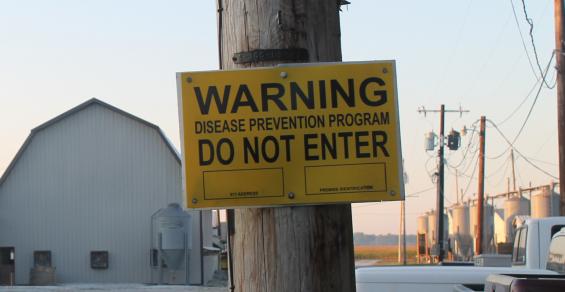Hog Outlook: The Swine Health Improvement Plan is modeled after the National Poultry Improvement Plan.
Since the 1930s, the poultry industry has had an avenue to mitigate deadly disease in the nation’s flocks. Now, as animal diseases threaten U.S. swine farms, the pork industry is adopting a similar playbook.
A pilot project is underway to implement a U.S. Swine Health Improvement Plan patterned after the National Poultry Improvement Plan. The NPIP started when pullorum disease ran rampant in the poultry industry and caused upward of 80% mortality in baby birds.
Over the years, the program has been extended to include testing and monitoring for other poultry diseases and several other avian pathogens.
According to the SHIP website, its principal objectives are to develop and implement an ASF-classical swine fever monitored certification program modeled after the basic tenets of the NPIP H5/H7 avian influenza monitored certification held by more than 99% of U.S. commercial poultry operations.
Success in participation
The U.S. SHIP ASF-CSF monitored certification aims to mitigate risks of disease introduction, and provide a practical means for demonstrating evidence of freedom of disease outside of foreign animal disease control areas in support of ongoing interstate commerce — and provide a pathway toward the resumption of international trade over the course of a trade-impacting disease response and recovery period. SHIP program standards will center on biosecurity, traceability and disease surveillance.
The first congress of industry stakeholders and subject matter experts met in August, tasked with defining the program’s mission and direction. In addition to producers and packers, the congress is meant to include participation from veterinarians, diagnosticians, microbiologists and veterinary medical officers.
About 230 delegates and guests from 28 states, including all the major pork-producing states, attended that gathering in Des Moines. The second House of Delegates will be Sept. 7-8 in Bloomington, Minn.
The National Pork Board is funding nearly $600,000 of SHIP-related working group project-based work and outreach. USDA is providing $495,000 over two years, which will focus on human resources, management systems and outreach necessary to facilitate the initiation and central coordination of the pilot project.
What now?
SHIP will only be a success if stakeholders get involved, and that means producers and packers enrolling in the program with the official state agency. Producers who have already established a Secure Pork Supply Plan should also enroll in SHIP.
The program’s requirements will leverage the participating producers’ and packing and slaughter facilities’ experience with Pork Quality Assurance, the Secure Pork Supply Plan, and utilization of electronic data capture for movement and health certificates.
ASF is not on U.S. soil yet, but last year it crept closer, infecting pigs in the Dominican Republic and Haiti. That proximity brings with it the urgency to take every action possible to keep ASF and other foreign animal diseases at bay.
Action is better than reaction, and NPIP’s playbook has a proven track record as pullorum disease was generally eradicated by 1970, thanks to the testing, identification and destruction of infected flocks under the established plan.
Elimination of ASF is proving difficult in those countries that have been infected, but with a solid game plan, such as SHIP, the U.S. swine industry is on the right path.
Schulz is a Farm Progress senior staff writer who grew up on the family hog farm in southern Minnesota, before a career in ag journalism, including National Hog Farmer.



